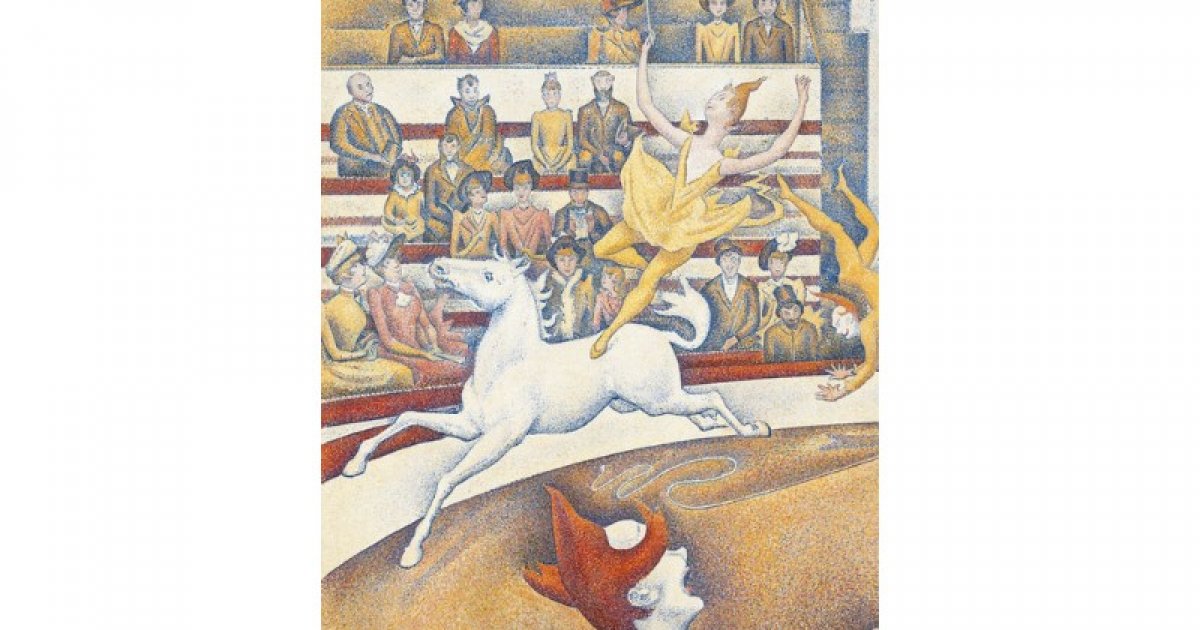MUSEE ORSAY, Seurat The Circus_Room 37
 Language: English / USA
Language: English / USA
In order to fully appreciate this work called The Circus, you must first get to know its author.
You should know that Seurat brought a real revolution to the art world by giving birth to Neo-impressionism or Scientific Impressionism, which is based on studies such as those carried out by the chemist Michel-Eugène Chevreul in the field of chromatics. Based on his discoveries, in fact, the artist created the painting technique known today as Pointillism or Divisionism, where pure colors are juxtaposed on the canvas, without mixing them, but applying them in the form of tiny dots or strokes that the observer's eye then recomposes and blends to create colors different from those actually applied. Another scholar who influenced Seurat's technique was Charles Henry, who argued that lines and colors were closely linked to the emotions aroused in observers: for example, ascending lines convey joy, descending ones sadness, warm colors dynamism, and cold ones inertia.
Now, looking at the painting, you can see the elements I mentioned, first of all pointillism. See, for example, how the contours of the figures are obtained by the thickening of the blue dots that outline everything and that have also been used to create the frame of the painting. This dark color, in sharp contrast to the more flamboyant colors of the canvas, emphasizes the warm tones, which convey a cheerful feeling.
Note how the scene is divided into two distinct sectors: the circus ring, with many ascending features such as the arms of the acrobat on the horse or the clown's hair, to make the scene dynamic, and the stands, where vertical and horizontal lines prevail, to emphasize the static nature of the audience.
You should note that The Circus, along with two other canvases, Circus Sideshow and Le Chahut, was part of a series of paintings by Seurat devoted to the amusements in vogue in Paris at the time, but if you look closely at the top left-hand band of this work, you can see that it was not portraying an idyllic world, but the real one, also made up of divisions between social classes. In the stands furthest from the circus ring, in fact, were the less well-off, those who could not afford the more expensive tickets.
Here's an interesting fact: As beautiful as it is, unfortunately this work remained unfinished because Seurat died suddenly at the age of only 31, probably of diphtheria, followed a few days later by his son.



